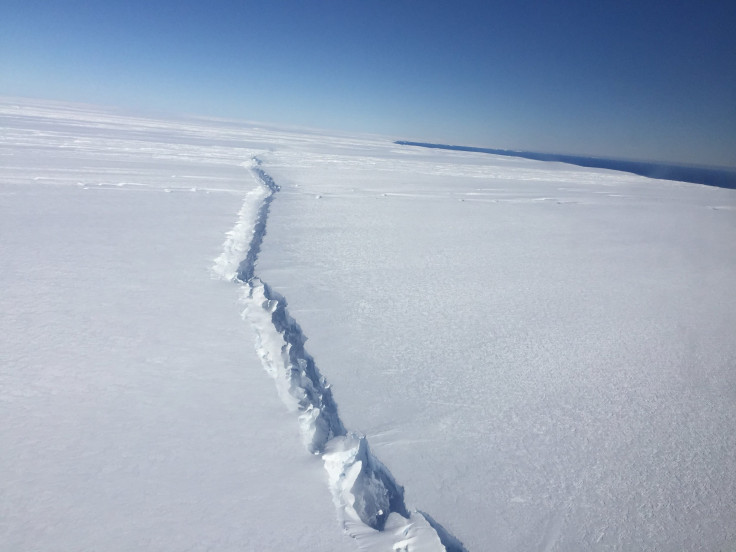Pine Island: 100 Square-Mile Iceberg Breaks Off Antarctic Glacier

Over the weekend, an iceberg broke off from a glacier in western Antarctica measuring about 100 square miles. In 2015 a berg more than twice the size of the one that broke off this weekend also broke off. And in 2013 one even larger broke off. With the most recent break researchers are beginning to worry that it signifies a bigger issue, one where the glacier will continue to lose more and more ice in the future.
The break over the weekend was tweeted by Stef Lhermitte, an assistant professor at the Delft University of Technology in the Netherlands, he posted a photo of the large chunk of ice that had calved from the glacier.
Breaking news from Pine Island Glacier, which lost 267km2 of icebergs today, after the internal crack resulted in a large calving event 1/n pic.twitter.com/sLwGTyNTfC
— Stef Lhermitte (@StefLhermitte) September 23, 2017
Since then Lhermitte has continued tweeting updates on the glacier along with comparisons of this break to those of the past. The calving is occurring very close to the same spot each time it happens, Lhermitte noted.
.@NASAEarth 's MODIS satellite gives an overview of #PIG's glacier front location since 2009 + corresponding 3 major calving locations 7/n pic.twitter.com/miP1RAUCBF
— Stef Lhermitte (@StefLhermitte) September 24, 2017
The Pine Island Glacier is losing roughly 45 billion tons of ice each year, contributing about 1 millimeter of global sea level rise over eight years. Should the glacier continue to melt and break the way it has this rise would continue.
After the 2015 calving event, researchers at the Ohio State University found that the rift causing the ice to break off was occurring inland rather than where the end of the ice met the water. They saw that a rift had formed 20 miles inland starting in 2013 and as it moved over two years it neared the edge and cause the ice to then break off and set a giant iceberg into the ocean for nearly two weeks.
The researchers saw a similar trend in the Greenland Ice Sheet. In that case the water was seeping inland under the bedrock and actually melting the ice from below. The fact that the rift began in the middle of the sheet indicates that something was able to weaken the ice shelf from the center, possibly warming ocean waters. This can happen with glaciers because they’re fairly permanent ice that has formed on top of actual land, ice shelves form on glaciers and then slide down and end up floating in the ocean. Sea ice on the other hand, or icebergs, are floating ice attached to no landform.
Earlier this year the Lasen C Ice Shelf off the Antarctic peninsula had a calving event that results in one of the largest icebergs ever recorded floating off into the ocean. This event and the more recent calving of the Pine Island Glacier are both indications of warming ocean waters and the continuation of sea level rise in the future.
© Copyright IBTimes 2024. All rights reserved.





















